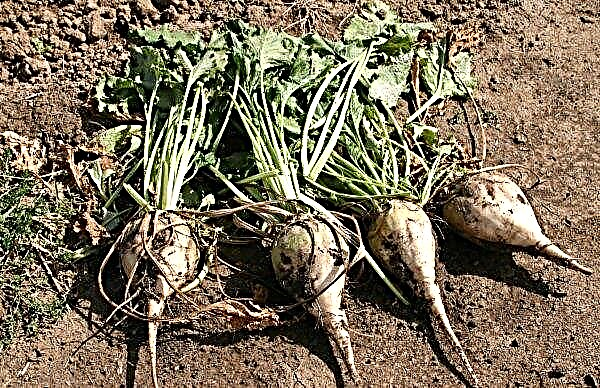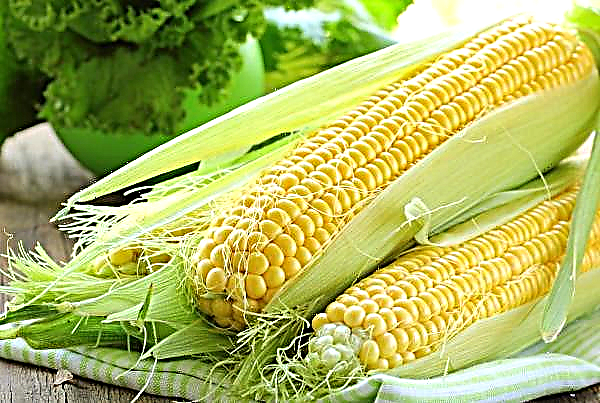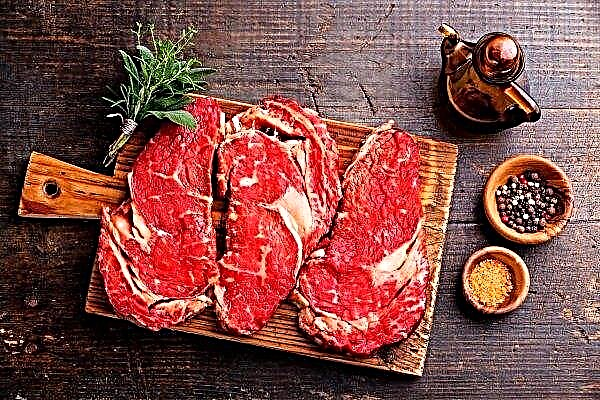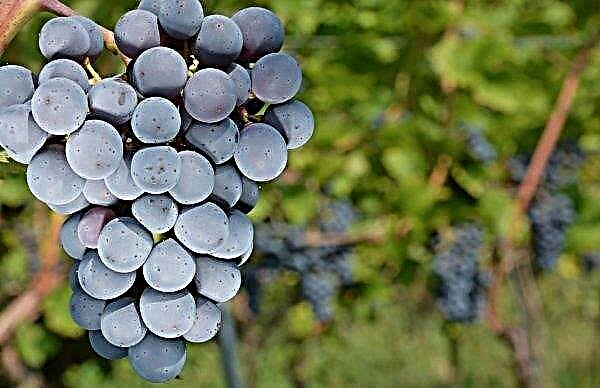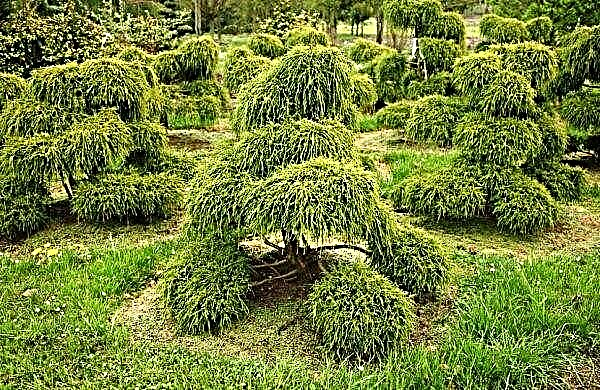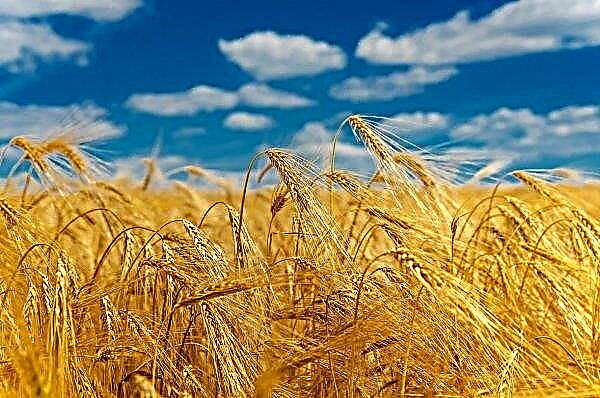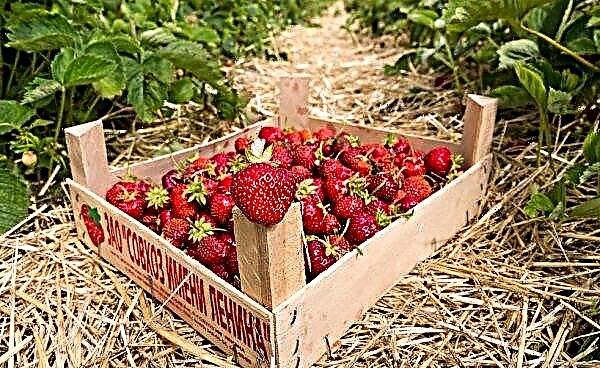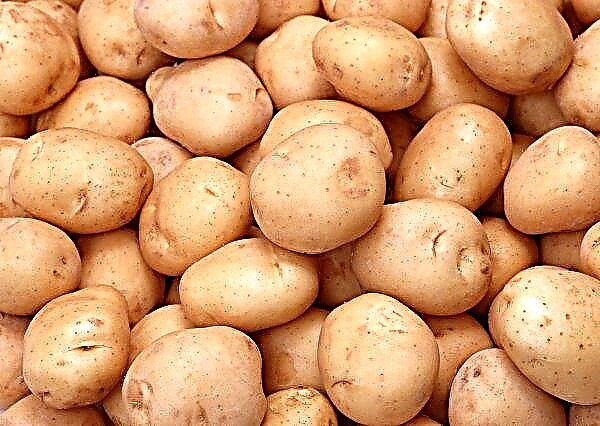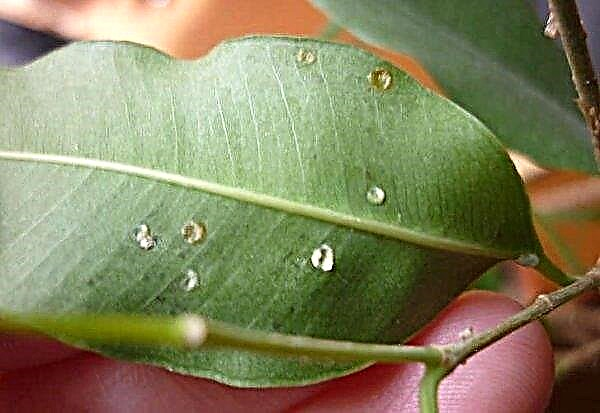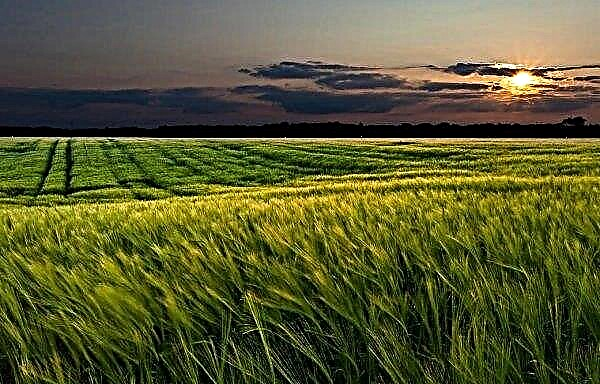Buckwheat is a popular product among many peoples of the world. But few people thought about its origin and methods of application, except for the manufacture of various dishes. Read about where buckwheat came from, what is the history of its appearance in the CIS countries and Europe, read on.
Buckwheat History
Sowing buckwheat (it is ordinary, or edible) is a grassy crop belonging to the genus Buckwheat, the buckwheat family. The seeds of this plant are taken for human nutrition, feed of farm animals and birds.The birthplace of buckwheat is North India and Nepal. Wild forms of this culture grew on the western spurs of the Himalayas. Its introduction to food culture occurred over 5 thousand years ago.
Common
According to historians, the distribution of the described cereals comes from India and Nepal, where it came from in the 15th century BC. e. began to import to China, Korea and Japan. Subsequently, culture penetrated the states of the Middle East and Central Asia. According to historians, buckwheat fell on the territory of Europe during the Tatar-Mongol invasion.
In France, Portugal and Belgium it was called the “Arab grain”, while Italians and Greeks were called “Turkish grain”. In Germany, seed buckwheat was called “pagan grain”. And being introduced into the territory of Russia, the culture was called “buckwheat” or “buckwheat”. Presumably, this name is due to the fact that it was sold by merchants from Greece or Byzantium. It is also possible that it began to spread thanks to the Greek monks, who by that time had often met on Slavic lands - the monks often raised unpretentious and nutritious cereals for food.
Did you know? The aroma emanating from buckwheat husks is able to normalize sleep, therefore, special pillows fill it with the purpose of getting rid of insomnia.
Tatar
Tatar buckwheat is an annual culture that, by the appearance and quality of its seeds, is very similar to ordinary buckwheat. In everyday life in humans, it appeared more than 5 thousand years ago. This plant did not have to be cultivated on its own, because Tatar buckwheat is a wild species that appears in the fields like a weed. But at the same time, it was also used as a food product and feed for livestock, especially in the famine and in times of poor harvesting of ordinary buckwheat. This species is also great for collecting honey and is used in pharmacology.
A rutin substance is taken from it, which is used to improve blood circulation and prevent thrombosis.Tatar buckwheat is widespread in the mountainous regions of countries such as China, India, Nepal, Japan. It is cultivated there because sowing buckwheat is not able to grow on high ground.
Buckwheat in Russia
Buckwheat is a favorite product among Slavic peoples. Countries such as Ukraine, Russia and Belarus have national dishes that are cooked with this grits. Today, the Russian Federation is its largest consumer, so half of the world's buckwheat harvest is cultivated on its territory.
When they began to grow
The first written confirmation that buckwheat was grown and eaten by people living in the territory of Ancient Russia, is considered a mention of this culture in the famous annals of "The word about Igor's regiment." This manuscript dates from 1185. But there is also evidence that buckwheat was cultivated in this area a thousand years earlier. During archaeological excavations conducted in the places of settlement of the Sarmatians, vessels were found with buckwheat grains, whose age dates back to the I-II centuries BC. e.
With the development of agricultural life in Russia, the demand for buckwheat grew. Already in the XV century, it began to be grown on a large scale, and in the XVI-XVII centuries, Ukraine occupies a leading position in the world in the cultivation of this plant.
What species were grown
In the works of the culinary art historian V. Pokhlebkin it is mentioned that when cooking friable porridge used a coarse kernel, which was selected from seeds of buckwheat seed (she is ordinary). It was also crushed and used to make sweet cereal. In addition, the Slavs also raised Tatar buckwheat for animal feed.
Application
Sowing buckwheat is a bread and honey plant. It is widely used in the food industry. But buckwheat is used not only as food, because this plant is an excellent honey plant. Also, this culture is in demand among adherents of traditional medicine.
Important! The flowers and leaves of the plant are not used for eating raw, as they contain toxic substances.
Getting honey
Buckwheat flowering begins in the last decade of June and lasts until mid-August.. During this period, bees must actively collect nectar from flowers, therefore, by the time of buckwheat flowering, beekeepers must have time to establish beehives in close proximity to the fields sown with this crop.
After all the honeycombs are filled with honey, they begin downloading the product and then pouring it into barrels for storage. Buckwheat is a useful plant that is grown without the use of pesticides and other chemicals. Therefore, honey collected from the flowers of this culture is environmentally friendly and healthy.
Eating
Buckwheat has proven itself in culinary art, because this type of porridge is very simple to cook and can rarely be spoiled, so even a novice chef can cook it. Krupa is used as a side dish, it is combined with meat and vegetables.
Buckwheat can be part of soups and become the basis for the sauce. Cereal flour is used for baking and noodles. Buckwheat grains can even be eaten raw. They can be steamed or germinated, this does not change their beneficial properties.
Medical use
This product is well known for its beneficial properties. It is included in many diets that are aimed at improving the body. Doctors recommend eating buckwheat to those people who suffer from anemia associated with a decrease in hemoglobin. This is because this cereal contains a large amount of iron and copper, which in combination contributes to the acceleration of blood formation processes.
Buckwheat is indispensable in the diet of a person suffering from diseases of the gastrointestinal tract. It is part of the menu, because it is a dietary, quickly digestible product, which also helps to speed up metabolism and quickly remove toxins.
Did you know? Buckwheat is one of the products of the national cuisine of Japan. From it make noodles called "soba".
But not only buckwheat has useful properties and is used by humans for the purpose of healing. The flowers and leaves of this plant are also used in folk medicine. They are used as additional therapy in the treatment of diseases of the cardiovascular system and upper respiratory tract. They are suitable for pain in joints and back, for the healing of small scratches and wounds.
The croup, which is heated in a frying pan and poured into a tissue bag, will perfectly help with back pain. It is applied to the site of pain localization in order to relax the muscles and relieve spasm. The procedure can be done in the morning and evening before bedtime, for 15-20 minutes. To get rid of cough, you can brew buckwheat leaves and flowers.
Preparation and use of infusion:
- Pour into a glass container 30 g of collection of leaf plates and flowers.
- Pour 500 ml of boiling water.
- Cover and leave for 120 minutes.
- Consume 50 ml 3 times a day for 5 days.

To get rid of nervous tension, use a decoction of flowers and leaves of buckwheat.
Preparation and use of a decoction for neurasthenia:
- Boil 1 liter of water.
- Dry collection of leaves and flowers of buckwheat in an amount of 150 g to fill in a saucepan.
- Boil for 5 minutes.
- After that, cover and leave to infuse for 30 minutes.
- Take orally 50 ml 3 times a day for 14 days.

The above decoction is also used for arthritis of 100 ml 4 times a day for 5 days.Buckwheat can be used as a powder for diaper rash in infants. To do this, the porridge is ground in a coffee grinder or blender until flour. Use this tool as necessary from 1 to 4 times a day.
Important! Use traditional medicine with extreme caution. If, after consuming infusions or decoctions of buckwheat, allergic reactions appear in the form of a rash or shortness of breath, you should consult a doctor.
Chemical composition
Buckwheat is a useful product that contains a lot of vitamins and minerals necessary for the proper functioning and development of the body. The calorie content of cereals is 308 kcal per 100 g.
Buckwheat contains (per 100 g):
- proteins - 12.6 g;
- fats - 3.3 g;
- carbohydrates - 57.1 g;
- ash - 1.7 g;
- water - 14 g;
- dietary fiber - 11.3 g.

| Vitamin Composition: | Macro and micronutrients: |
| carotene | potassium |
| thiamine | calcium |
| riboflavin | silicon |
| pantothenic acid | magnesium |
| pyridoxine | sodium |
| folates | sulfur |
| tocopherol | phosphorus |
| biotin | chlorine |
| phylloquinone | vanadium |
| — | iron |
| — | iodine |
| — | strontium |
| — | fluorine |
| — | zinc |
So, buckwheat appeared in everyday life in humans many years ago, and since then it is considered not only tasty, but also useful product, which is applicable in various spheres of life. It is also important that the purchase of buckwheat and the preparation of both food and medicinal infusions from it, is within the power of almost everyone.

